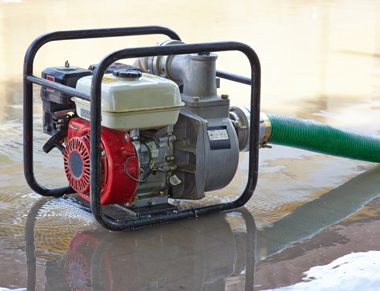 Before you enter a flooded basement, take the following steps:
Before you enter a flooded basement, take the following steps:
Turn off electricity and gas. Check outside basement walls for possible cave-ins, evidence of structural damage or other hazards. Open doors and windows.
If you need to pump water out of the basement, check with your insurance company. It may want to perform a personal inspection and provide guidance.
Do not use an electric pump powered by the home’s electrical system. Use a gas-powered pump or one connected to an outside line. Because of their exhaust, operate gas-powered pumps outside the house with a hose running into the basement.
Pump out water in stages. Removing all of the water at once might cause serious structural damage. Water in the basement helps brace the walls against the extra pressure from water still in the soil outside your house. If water is pumped out too soon, outside pressure may cause the foundation, basement walls or floor to crack or rupture.
Mark the level of the water on a wall or support column. Pump out 1 foot of water. Mark the new water level and wait overnight. Check the water level the next day. If the level went back up and covered your original mark, it’s too early to pump water from your basement.
Wait 24 hours and again pump out a foot of water. Check the level the next day. When water in the basement stops rising, pump out 2 to 3 feet and wait overnight. Repeat daily until all the water is out of the basement.
Adapted by permission from West Virginia University.